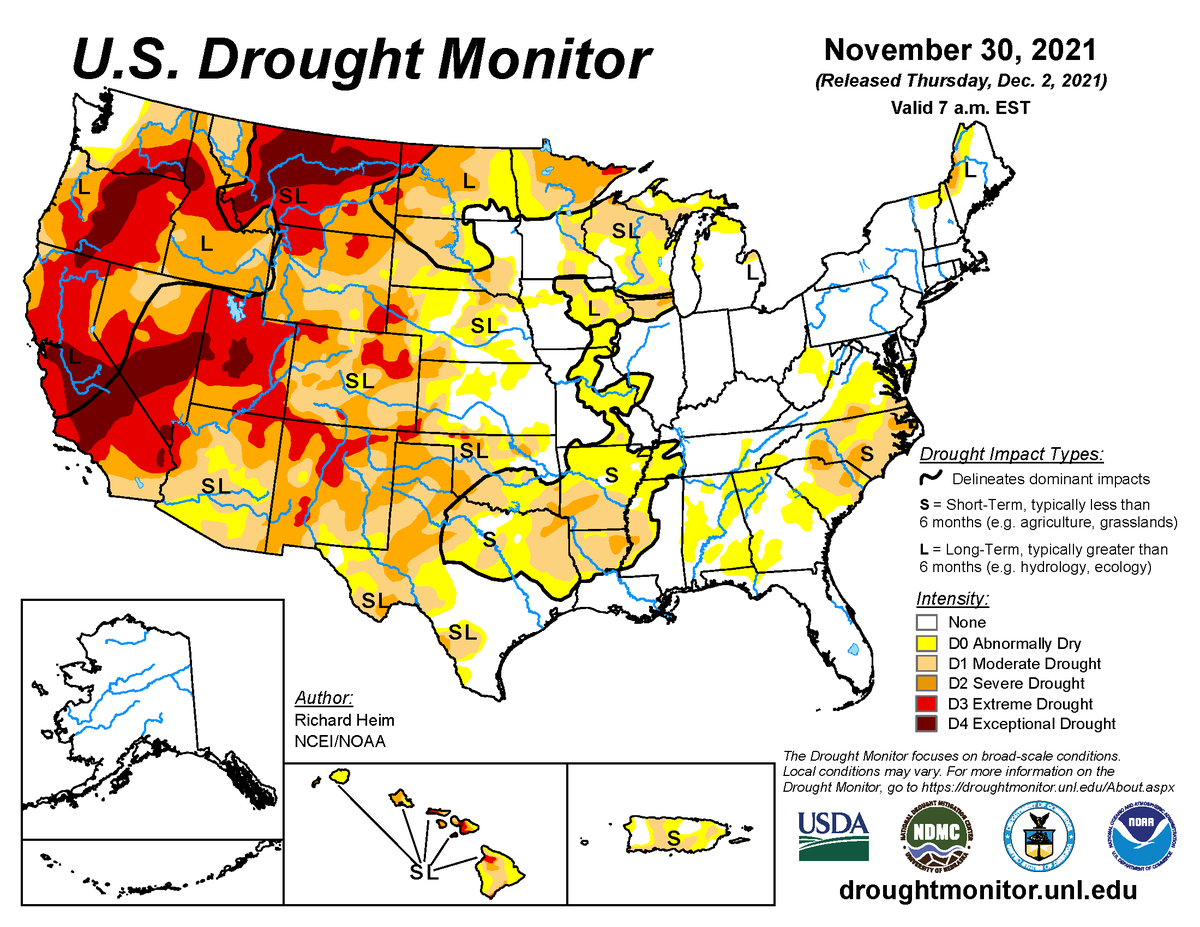
According to the November 30, 2021, U.S. Drought Monitor, moderate to exceptional drought covers 44.8% of the United States including Puerto Rico, an increase from last week’s 42.3%. The worst drought categories (extreme to exceptional drought) increased from 14.4% last week to 14.9%.
Several Pacific weather systems moved across the contiguous United States (CONUS) during this past week. An upper-level ridge over the western CONUS directed the systems across the northern states, while a cutoff low trekked across Texas then into the Gulf of Mexico. The Pacific systems dragged cold fronts with them that stretched the width of the CONUS, from the Great Lakes to the Gulf of Mexico coast.
The fronts triggered rain and snow over parts of the country, but they were starved of precipitation by the western ridge and its northwesterly flow over the central CONUS. As a result, the week was wetter than normal only in parts of the Pacific Northwest, northern Rockies, Great Lakes, and Texas. The weather was drier than normal across the rest of the CONUS with large parts of the West, Great Plains, Upper Mississippi Valley, and Southeast receiving no precipitation.
Most of the West and Great Plains was warmer than normal, while an upper-level trough and surface cold fronts gave most of the CONUS east of the Mississippi River a colder-than-normal week. The persistent above-normal temperatures contributed to excessive evapotranspiration in western portions of the Great Plains as well as parts of the West. Lack of precipitation, excessive evapotranspiration, and windy conditions further dried soils, again especially in western portions of the Plains.
The continued dryness expanded or intensified drought in parts of the southern to central Rockies, Great Plains, Lower to Mid-Mississippi Valley, Southeast, and Mid-Atlantic states, as well as Puerto Rico. Only a few places in Texas, North Dakota, and Minnesota saw drought contraction. Overall, expansion exceeded contraction, with the nationwide moderate to exceptional drought area increasing this week.
Abnormal dryness and drought are currently affecting over 132 million people across the United States including Puerto Rico—about 42.5% of the population.

The full U.S. Drought Monitor weekly update is available from Drought.gov.
In addition to Drought.gov, you can find further information on the current drought as well as on this week’s Drought Monitor update at the National Drought Mitigation Center.
The most recent U.S. Drought Outlook is available from NOAA’s Climate Prediction Center and the U.S. Department of Agriculture provides information about the drought’s influence on crops and livestock.
For additional drought information, follow #DroughtMonitor on Facebook and Twitter.



